11-06-2009, 01:54 PM
Sorry, won't be able to give any scratchbuilding tips as my skill level really doesn't venture that high. However, if it's for improvising stuff and general tips, i think i've got a few to share.
* Water-transfer decal sheets tend to lose their adhesive properties if they've been exposed to too much air after awhile. Make them sticky once again by adding a few drops of white glue to the water before applying the decals.
* Powdered cray-pas or brushes rubbed on pencils can be applied to the edges of models to simulate weathering.
* The steel tops from used ballpoint pens like Panda can be used as boosters and verniers.
* Cloth or handkerchiefs soaked with water works as a substitute if you don't have a filter or breath mask when painting.
* Sawdust or even plastic dust from sprues can be turned into putty for getting rid of seamlines. Mix with glue afterwards to a gooey consistency and apply to seams. Sand after it's dry.
* Lighter fluid can be used as a thinner for enamels if no turpentine is available. Alternatively, acetone can be used with lacquers and rubbing alcohol works with acrylics.
* These solvents can also be used to clean up brushes after painting.
* This is a no-brainer but if you don't want to shell out for a hobby-grade modeller's knife, cutters from the nearest school supply can be your best friend.
* Wires from junked computer parts can be used when installing LEDs in models.
* Paint or nail polish can be a substitute for glue, especially for clear part like canopies and visors, as there will be no fogging unlike when using cyanoacrylate glues like Mighty Bond.
* Bicycle brake cables can be used to simulate hydraulic cables. Just make sure that you're getting them from junked bikes and remove the rubber covering before painting it. Old guitar strings work as well.
* Some glues are too strong to be used for styrene sheets but a little known solvent that works well is chloroform - A.K.A the stuff used to kidnap people.
* Another use for white glues like Elmer's is for re-tightening joints that have loosened up over the years. Just add a couple drops in the polycaps or joint-holes and let dry for a bit.
* Nail files can be used for evening out surfaces if sandpaper is unavailable.
* Sprues have a wide variety of uses ranging from scratchbuilding, part-holders during the painting process, paint-stirrers to extra beam sabers from clear sprues.
* 0.2 and 0.3 technical pens are a cheaper alternative to Gundam markers for panel lines.
* Lollipop sticks and the inner ink-holding tubes of ballpoint pens can be used for scratchbuilding gun barrels, pistons and other stuff. Balloon sticks can be used for cannons.
* Old floppy disks and junked CPU cases can be used as bases for hangar dioramas.
* Cheap paints from hardware stores are a good alternative to hobby-grade paints if you're on a budget. Just be sure to thin them before applying to your kits as the unthinned paint is strong enough to eat through plastic.
* Water-transfer decal sheets tend to lose their adhesive properties if they've been exposed to too much air after awhile. Make them sticky once again by adding a few drops of white glue to the water before applying the decals.
* Powdered cray-pas or brushes rubbed on pencils can be applied to the edges of models to simulate weathering.
* The steel tops from used ballpoint pens like Panda can be used as boosters and verniers.
* Cloth or handkerchiefs soaked with water works as a substitute if you don't have a filter or breath mask when painting.
* Sawdust or even plastic dust from sprues can be turned into putty for getting rid of seamlines. Mix with glue afterwards to a gooey consistency and apply to seams. Sand after it's dry.
* Lighter fluid can be used as a thinner for enamels if no turpentine is available. Alternatively, acetone can be used with lacquers and rubbing alcohol works with acrylics.
* These solvents can also be used to clean up brushes after painting.
* This is a no-brainer but if you don't want to shell out for a hobby-grade modeller's knife, cutters from the nearest school supply can be your best friend.
* Wires from junked computer parts can be used when installing LEDs in models.
* Paint or nail polish can be a substitute for glue, especially for clear part like canopies and visors, as there will be no fogging unlike when using cyanoacrylate glues like Mighty Bond.
* Bicycle brake cables can be used to simulate hydraulic cables. Just make sure that you're getting them from junked bikes and remove the rubber covering before painting it. Old guitar strings work as well.
* Some glues are too strong to be used for styrene sheets but a little known solvent that works well is chloroform - A.K.A the stuff used to kidnap people.
* Another use for white glues like Elmer's is for re-tightening joints that have loosened up over the years. Just add a couple drops in the polycaps or joint-holes and let dry for a bit.
* Nail files can be used for evening out surfaces if sandpaper is unavailable.
* Sprues have a wide variety of uses ranging from scratchbuilding, part-holders during the painting process, paint-stirrers to extra beam sabers from clear sprues.
* 0.2 and 0.3 technical pens are a cheaper alternative to Gundam markers for panel lines.
* Lollipop sticks and the inner ink-holding tubes of ballpoint pens can be used for scratchbuilding gun barrels, pistons and other stuff. Balloon sticks can be used for cannons.
* Old floppy disks and junked CPU cases can be used as bases for hangar dioramas.
* Cheap paints from hardware stores are a good alternative to hobby-grade paints if you're on a budget. Just be sure to thin them before applying to your kits as the unthinned paint is strong enough to eat through plastic.
"May those who accept their fate find happiness. May those who defy their fate find glory."






